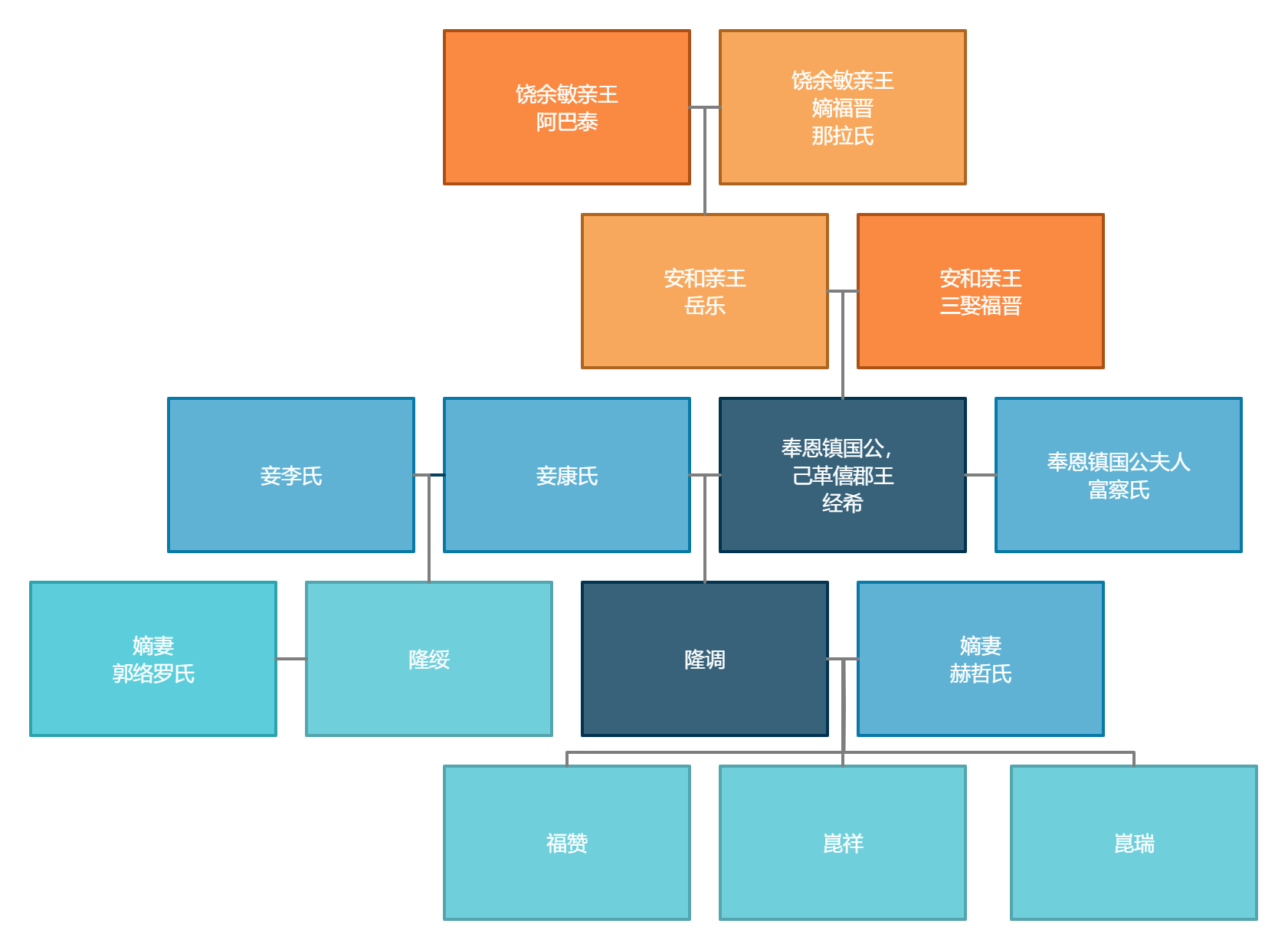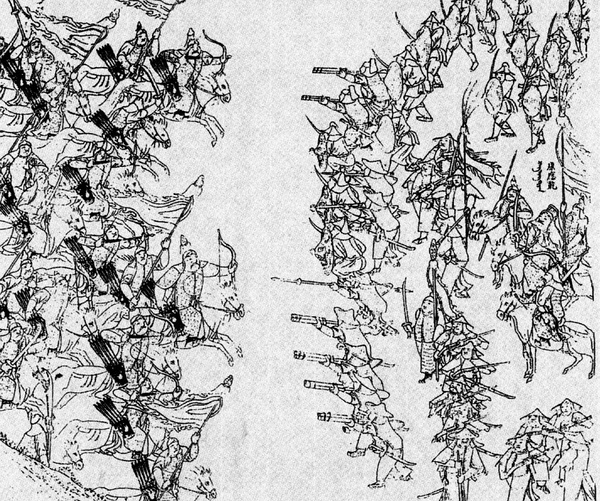|
Prince Xi
Prince Xi of the Second Rank (僖郡王) was a Qing dynasty princely peerage. The peerage was created in 1682 for Jingxi, Nurhacii's great-grandson and 17th son of Prince An of the Second Rank Yolo. As the peerage was not granted perpetual inheritability, each successive bearer held diminished ranks vis-a-vis his predecessor. Prince Xi of the Second Rank * 1682-1717:Grace defender duke Jingxi. Jingxi was granted a title of prince of the second rank with the honorific name "Xi" and demoted to grace defender duke in 1690. References Prince Xi Extinct Qing dynasty princely peerages {{China-hist-stub ... [...More Info...] [...Related Items...] OR: [Wikipedia] [Google] [Baidu] |
Qing Dynasty
The Qing dynasty ( ), officially the Great Qing,, was a Manchu-led imperial dynasty of China and the last orthodox dynasty in Chinese history. It emerged from the Later Jin dynasty founded by the Jianzhou Jurchens, a Tungusic-speaking ethnic group who unified other Jurchen tribes to form a new "Manchu" ethnic identity. The dynasty was officially proclaimed in 1636 in Manchuria (modern-day Northeast China and Outer Manchuria). It seized control of Beijing in 1644, then later expanded its rule over the whole of China proper and Taiwan, and finally expanded into Inner Asia. The dynasty lasted until 1912 when it was overthrown in the Xinhai Revolution. In orthodox Chinese historiography, the Qing dynasty was preceded by the Ming dynasty and succeeded by the Republic of China. The multiethnic Qing dynasty lasted for almost three centuries and assembled the territorial base for modern China. It was the largest imperial dynasty in the history of China and in 1790 the f ... [...More Info...] [...Related Items...] OR: [Wikipedia] [Google] [Baidu] |
Nurhaci
Nurhaci (14 May 1559 – 30 September 1626), also known by his temple name as the Emperor Taizu of Qing (), was a Jurchen chieftain who rose to prominence in the late 16th century in Manchuria. A member of the House of Aisin-Gioro, he reigned as the founding khan of the Later Jin dynasty of China from 1616 to 1626. Nurhaci reorganized and united various Jurchen tribes (the later "Manchu"), consolidated the Eight Banners military system, and eventually launched attacks on both the Ming and Joseon dynasties. His conquest of Ming dynasty's northeastern Liaodong region laid the groundwork for the Qing conquest of the Ming by his descendants, who founded the Qing dynasty in 1636. He is also generally credited with ordering the creation of a new written script for the Manchu language based on the Mongolian vertical script. Name and titles Nurhaci is written as in Manchu language. Some suggest that the meaning of the name in the Manchu language is "the skin of a wild boar", other ... [...More Info...] [...Related Items...] OR: [Wikipedia] [Google] [Baidu] |
Jingxi (prince)
Aisin Gioro Jingxi (; 1663–1717) was Qing dynasty imperial prince as 17th son of Yolo, Abatai's son and Nurhaci's grandson. Initially Jingxi became Prince Xi of the Second Rank, but was convicted of crime and demoted to grace defender duke. The peerage was not granted iron-cap status, which meant that each successive bearer of the title would hold diminished ranks vis-a-vis his predecessor. Prince Xi of the Second Rank peerage was passed to Longdiao, Jingxi's son. As Longdiao's sons died prematurely, the peerage became extinct. Life of Jingxi Jingxi was born in 1663 to lady Hešeri, Yolo's third primary consort and aunt of Empress Xiaochengren, Kangxi Emperor's first empress. In 1683, Jingxi was made the first Prince Xi of the Second Rank (僖郡王, meaning "guardful", "precautious"). In 1690, after Nuoni (member of Prince Keqin peerage ) discovered that Yolo had sown discord among the regents and princes and, moreover, had framed Nuoni for unwilling to demonstrate filial piety ... [...More Info...] [...Related Items...] OR: [Wikipedia] [Google] [Baidu] |
Prince Xi
Prince Xi of the Second Rank (僖郡王) was a Qing dynasty princely peerage. The peerage was created in 1682 for Jingxi, Nurhaci Nurhaci (14 May 1559 – 30 September 1626), also known by his temple name as the Emperor Taizu of Qing (), was a Jurchen chieftain who rose to prominence in the late 16th century in Manchuria. A member of the House of Aisin-Gioro, he reigned ...i's great-grandson and 17th son of Prince An of the Second Rank Yolo. As the peerage was not granted perpetual inheritability, each successive bearer held diminished ranks vis-a-vis his predecessor. Prince Xi of the Second Rank * 1682-1717:Grace defender duke Jingxi. Jingxi was granted a title of prince of the second rank with the honourific name "Xi" and demoted to grace defender duke in 1690. References Prince Xi Extinct Qing dynasty princely peerages {{China-hist-stub ... [...More Info...] [...Related Items...] OR: [Wikipedia] [Google] [Baidu] |

